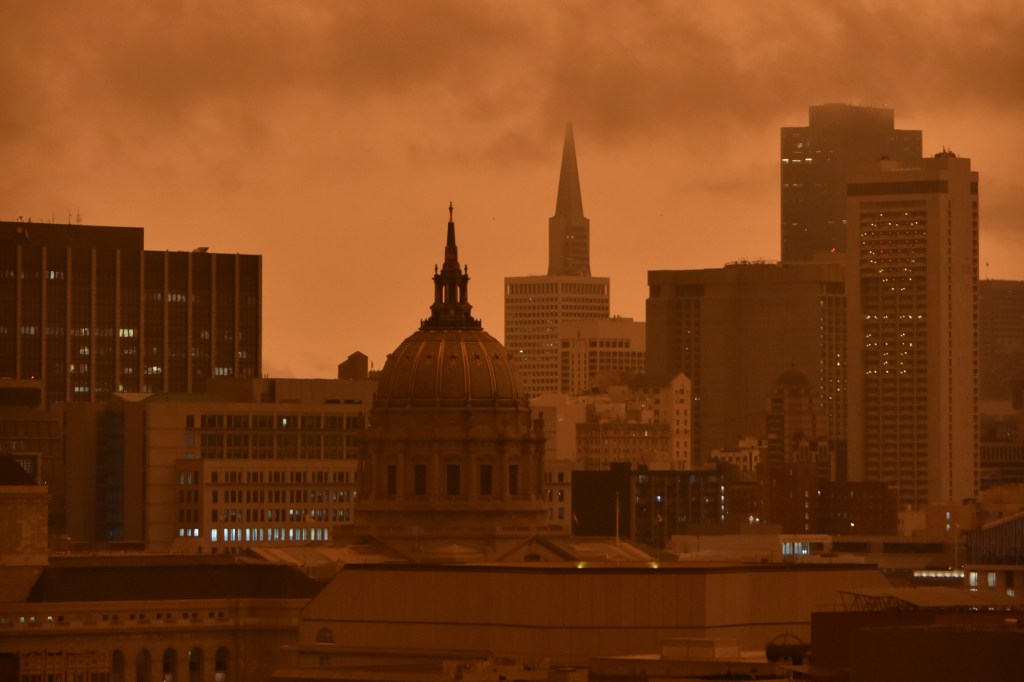As I write this, more than a dozen western states are ablaze, with each wildfire ranging from a few hundred to a few hundred thousand acres in size. In northern California, the LNU and SCU Lightning Complex fires (so called because lightning strikes were what instigated the series of small fires that merged to form these massive ones) are already the second and third largest in the state’s history; they are barely contained, and more than a dozen additional major fires are active throughout the state.
In fact, more than 1.5 million acres have already burned in the Golden State this year. Nearly 2,000 structures have been destroyed; tens of thousands more are currently threatened. Seven people have died. This is just the latest in a litany of examples that should make it impossible to ignore how climate change is increasing the frequency and scope of natural disasters.
I keep a close eye on wildfires because I grew up in San Francisco, and my family still lives there. My father texted me a photo of the sky, so thick with smoke that the sun glowed an eerie red despite their house being miles from the nearest blaze. Air quality throughout the region is bordering on (or well into) “unhealthy” territory. The threat of respiratory distress for many is real, and more so during the pandemic. Though my family has the resources to evacuate if need be, I worry about those who do not. The effects of natural disasters like wildfires are insidious and reach beyond the devastation of the burn zone. In the best of times, air pollution has a disproportionate effect on low-income communities and communities of color. The American Lung Association attributes this disparity to the fact that these communities tend to be closer to sources of pollution and have less access to grocery stores, health care, and job opportunities.
These communities, many of which have been subject to decades of racist housing policies such as redlining, are also disproportionately and devastatingly affected by rising temperatures—some so high that they dry out hillsides, which then easily ignite. A recent New York Times article, citing a 2020 study from Climate called “The Effects of Historical Housing Policies on Resident Exposure to Intra-Urban Heat: A Study of 108 U.S. Urban Areas,” reports that formerly redlined neighborhoods, many of which have remained communities of color, have minimal green space or tree coverage. This causes them to run an average of 5, but as many as 12 degrees F hotter in the summer months than wealthier, landscaped, predominately white neighborhoods. Every one degree increase in temperature in a heat wave, the article states, can lead to a 2.5% increase in the risk of heat-related deaths.
We know the statistics: Buildings are responsible for nearly 40% of the world’s greenhouse gas emissions. Working to design more sustainable structures and cities and to reach zero carbon emissions by 2040 is our best shot at preventing the planet from warming to the point of no return.
Greening our cities isn’t just about creating a more sustainable built environment. It is also about creating more just and equitable environments. The air in wealthy California neighborhoods will clear when the fires die out, but in low-income communities and communities of color, poor air quality is an ever-present reality that climate change is only making worse. We must act quickly to stem the tide of climate change and the increasing severity of the disasters it brings. The mounting human toll is too high to bear.
